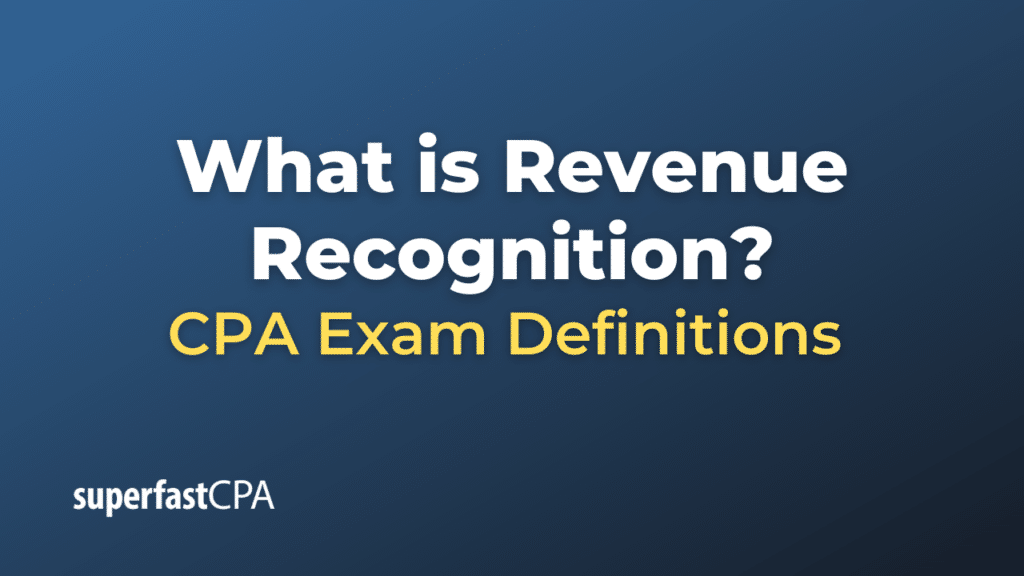Revenue Recognition
Revenue recognition is an accounting principle that determines the specific conditions under which revenue is recognized or accounted for. In other words, it’s about determining when a business can record a sale or income on its financial statements. This principle is essential because it ensures that financial statements provide a clear and consistent depiction of a company’s financial performance.
The revenue recognition principle is governed by the Generally Accepted Accounting Principles (GAAP) in the U.S. and the International Financial Reporting Standards (IFRS) internationally.
The core principle behind revenue recognition is that revenue should be recognized when the goods or services are transferred to the customer and the entity has satisfied its performance obligation.
There are five essential steps to recognize revenue under the new standards:
- Identify the contract with a customer: This means an agreement between two parties that creates enforceable rights and obligations.
- Identify the performance obligations in the contract : A performance obligation might be a product, service, or other deliverable. For example, in a contract to sell a car and provide maintenance services, there are two performance obligations: the car and the maintenance service.
- Determine the transaction price: This is the amount the seller expects to be entitled to in exchange for transferring the promised goods or services.
- Allocate the transaction price to the performance obligations: If there’s more than one performance obligation, the transaction price must be divided among those obligations based on their standalone selling prices.
- Recognize revenue when (or as) the entity satisfies a performance obligation: Revenue is recognized when the customer obtains control of the good or service, which could be at a point in time or over a period.
Example of Revenue Recognition
Prestige Home Appliances sells a premium refrigerator to a customer for $3,000. The price includes a refrigerator, delivery, installation, and a 2-year warranty service.
Steps for Revenue Recognition:
- Identify the contract with a customer: The customer signs a purchase agreement with Prestige for the refrigerator, its delivery, installation, and the 2-year warranty.
- Identify the performance obligations in the contract:
- The refrigerator itself
- Delivery of the refrigerator
- Installation of the refrigerator
- 2-year warranty service
- Determine the transaction price: The agreed-upon price is $3,000.
- Allocate the transaction price to the performance obligations: Prestige determines standalone selling prices for each obligation based on regular prices or estimated costs:
- Refrigerator: $2,500
- Delivery: $100
- Installation: $200
- 2-year warranty service: $200
- Recognize revenue when (or as) the entity satisfies a performance obligation:
- Refrigerator: Prestige recognizes $2,500 in revenue when the refrigerator is handed over to the delivery team.
- Delivery: The $100 revenue for delivery is recognized when the refrigerator is delivered to the customer’s address.
- Installation: The $200 for installation is recognized once the refrigerator is installed and is operational at the customer’s residence.
- 2-year warranty service: The $200 for the warranty is recognized over time. If we assume an even distribution over 24 months, Prestige would recognize approximately $8.33/month for the warranty service.
Conclusion:
By following the revenue recognition principle, Prestige Home Appliances ensures that its financial statements accurately represent the revenue earned from each distinct service it has provided, aligned with when the service was delivered or obligation was met. This method offers a clearer and more accurate depiction of the company’s financial performance and obligations over time.












